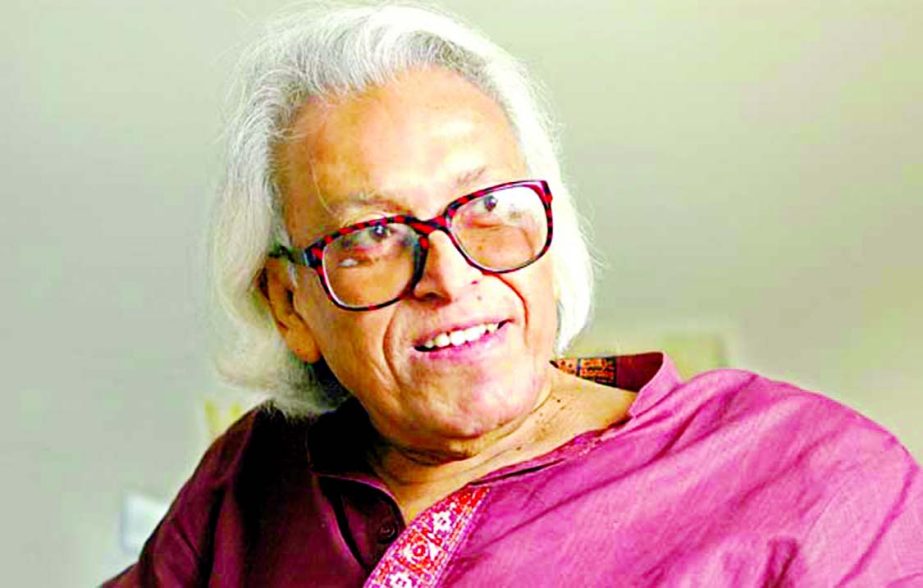
Shamsur Rahman was born in his grandfather’s house no. 46 Mahut-Tuli, Dhaka. His paternal home is situated on the bank of the river Meghna, a village named Paratoli, near the Raipura thana of Narshingdi district. He was the fourth of thirteen children. He studied at Pogos High Scnool from where he passed Matriculation in 1945. Later he took his IA. as a student of the Dhaka College. Shamsur Rahman started writing poetry at the age of eighteen, just after graduating from the Dhaka College. He studied English literature at the Dhaka University for three years but did not take the examination. After a break of three years he got admitted to the B.A. pass course and received his B.A. in 1953. He also received his M.A. in the same subject where he stood second in second division.
In his leisure after the Matriculation, he read the Golpo Guccho of Rabindranath Tagore. He told that this book took him into the extra ordinary world and transformed him into an altogether different personality. In 1949, his poem ‘Unissho Unoponchash’ was published in ‘Sonar Bangla’ which was then edited by Nalinikishor Guho.
He had a long career as a journalist and served as the Editor of a national daily, Dainik BangIa and the weekly Bichitra in the 1980s. A shy person by nature, he became an outspoken liberal intellectual in the 1990s
His health broke down towards the end of 1990s and on two occasions he received major cardiac surgery. He died in 2006 of heart and kidney failure after having been in a coma for 12 days.
Shamsur Rahman’s first book of poetry, ‘Prothom Gaan Dwityo Mrittyur Agey’ (Tr. First Song Before the Second Death) was published in 1960. He had to go through the political turbulence of 60’s and 70’s which also reflected in his poems clearly.
He wrote his famous poem ‘Asader Shirt’ which was written with respect to the mass uprising of 1969 led by Maulana Bhasani. During the Bangladesh Liberation War he wrote a number of extra ordinary poems based on the war. These poems were so inspiring that they were recited at the camps of freedom fighters.
Later these poems were published in ‘Bondi Shibir Theke’ (Tr. From Confinement in Enemy Territory) in 1972. Later he continued writing poems in the independent Bangladesh and remained as the poet whose poems reflect the history of the nation. During the historical movement against Ershad he published his book ‘Buk Tar Bangladesher Hridoy’ indicating the great sacrifice of Nur Hossain.
Shamsur Rahman’ wrote most of his poems in free verse, often with the rhythm style known as ‘Poyar’ or ‘Okhshorbritto’. It is popularly known that he followed this pattern from poet Jibanananda Das. He also wrote poems in two other major patterns of Bengali rhythmic style, namely, Matrabritto and Shworobritto.
Shamsur Rahman started his professional career as a Co-Editor in the English daily ‘Morning News’ in 1957. Later he left this job and went to the Dhaka center of the then Radio Pakistan. But he returned back to his own rank at ‘Morning News’ in 1960 and was there till 1964. After the liberation of Bangladesh he wrote columns in the daily Dainik BangIa. In 1977 he became the editor of this daily. He also jointly worked as the editor of ‘Bichitra’, a popular weekly published since 1973. During the period of President Ershad he got involved with internal turbulence in the ‘Dainik Bangla’.
A rank ‘Chief Editor’ was created to take away his position as the top executive and rip him off all executive powers. In 1987 he left the daily as a protest against this injustice. He also worked as the Editor of monthly literary magazine Adhuna for two years since 1986 and as the main Editor of the weekly Muldhara in 1989. He worked as one of the editors of Kobikantha, an irregular poetry magazine, in 1956, Zillur Rahman Siddiqui, a friend and critic, describes Shamsur Rahman as one who is ‘deeply rooted in his own tradition.’
In his opinion, Shamsur Rahman still soaks the language of our times, transcending the limits of geography, In his range of sympathy, his catholicity, his urgent and immediate relevance for us, Shamsur Rahman is second to none.”
Professor Syed Manzoorul Islam has similar praise for Rahman, “It is true he has built on the ground of the 30’s poets, but he has developed the ground, explored into areas they thought too dark for exploration, has added new features to it, landscaped it and in the process left his footprints all over.”
In the year 1993 renowned Bangladeshi writer Humayun Azad wrote a book about critical analysis of Shamsur Rahman’s poetry titled ‘Shamsur Rahman : Nihshongo Sherpa’ (tr. A lonely Climber).
Shamsur Rahman has to his credit huge number of books. Amongst those are Bondi Shibir Theke (1972), Dusshomoyer Mukhomukhi (1973), Firiay Nao Ghatok Kata (1974), Adigonto Nogno Pododhoni (1974), Ak Dhoroner Ohongkar (1975), Ami Onahari (1976), Bangladesh Shopno Dakhay (1977.
Some of them have also been translated into other languages. He has a good readership, particularly of his poetic works.
The poet was awarded Adamjee Award (1962), BangIa Academy Award (1960) Ekushey Padak (1977), Swadhinata Dibosh Award (1991), Mitshubishi Award of Japan (1992), Ananda Puroshker from India (1994). TLM South Asian Literature Award for the Masters, 2006.
His most famous poem, arguably, is a poem written in 1971 during the liberation War in Bangladesh.
— Shadhinota Tumi
Shadhinota tumi Robi Thakurer ojor kobita, obinashi gan
Shadhinota tumi Kazi Nozrul, jhakra chuler babri dolano mohan purush.
srishti-shukher ullashe kapa…
— Freedom, You
Freedom, you are the immortal poems and songs
of Rabindranath
Freedom, you are Kazi Nazrul, the great man with waving unkempt hair,
raptured in your joy of creation …
Poet Shamsur Rahman died in Dhaka on 17 August 2006 at the age of 77.

